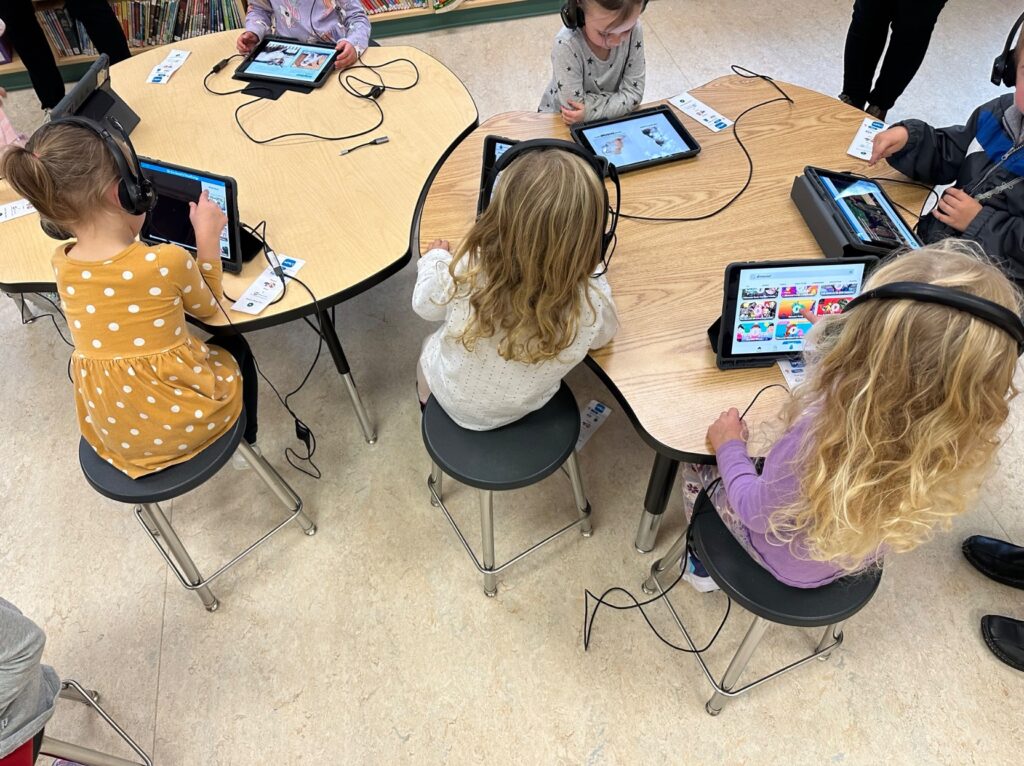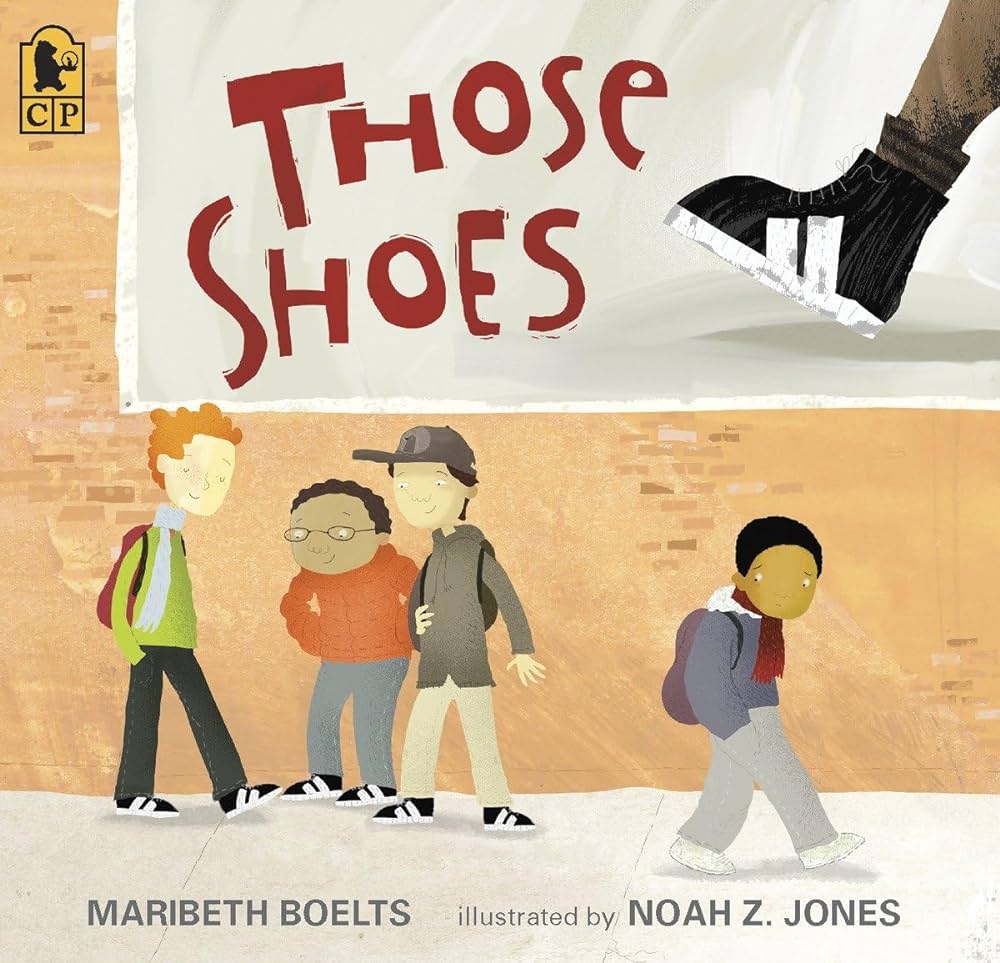Gibbs Reflection Cycle: In-situ Lindsay Park Elementary School
Description: Our first in-situ experience at Lindsay Park Elementary School involved assisting students in the library with Mrs. Rice and in Ana Pakenham’s room. The student teachers were split evenly; half of us went to the library to assist Mrs. Rice first. In the library, student teachers helped students log into EPIC! on school iPads, which was a straight-forward task as the kids were already familiar with the app. This was quite interesting as students were very engaged in using the technology and once they began reading they zoned right in. In Ana’s classroom, students were adept at using the EPIC! website but faced challenges with internet connectivity and navigating the mouse. This became quite a complication during student reading, I felt students within the classroom were much less engaged then the students within the library. Overall, this was a great experience and showed myself how important integrating technology into our classrooms can be.
Feeling: The feelings of this overall experience was enjoyable and interactive. Students were excited to work with us, and showed great eagerness to help us understand this online platform. I felt a sense of excitement being in the school and appreciated the positive response from the students. I feel that this lesson deeply resonated with the UVIC Teacher competency 12- “develop an understanding of how learners learn in order to cultivate effective learning environments” (Dziekan). Ana had to understand her students feelings toward reading, then gave them multiple great reading environments to try EPIC! reading.
Evaluation: Reflecting on this teaching experience, I learned valuable lessons. I discovered the read-along feature on EPIC!, a fantastic tool for children to read while listening, benefiting their English language development. The students’ showed a great willingness to showcase and demonstrate their engagement. Additionally, the experience highlighted how students, when organized into desk groups, can assist each other in learning to use this new tool.
Analysis: This experience emphasized the importance of listening to students and recognizing their helpfulness. The students exhibited kindness, respect, and a willingness to assist peers. It showed the significance of integrating technology into classrooms for long-term learning benefits. This inset experience was quite interesting as I have never been within a classroom where I am not needed and just observing children using technology. I had wished that I had more of a purpose within this classroom experience as students already understood all expectations. But this showed me just as in my Educational Psychology textbook explained “The third goal any management system is to help students become better able to manage themselves”(Woolfolk et al., 2020). It is blatant to see that these amazing educators have created an amazing sense of self management amongst students.
Conclusion: Overall, I personally believe that EPIC! is a valuable tool for future classrooms, providing an accessible platform that benefits struggling students and students of all elementary ages. I will most definitely be integrating this into my future classrooms to benefit my own students as integrating such platforms can enhance and improve learning of the English language.
Action Plan: My action plan involves integrating EPIC! into my future classrooms. This approach not only supports English language learning but also develops crucial technology skills, essential in our evolving society.



Gibbs Reflection Cycle: Drama Class with Lenore Emsland’s 3/4 Class
Description: During this particular in situ, we began class at Stage Door downtown Cranbrook. Mrs. Emsland’s 3/4 class came for an exciting session in which our professor, Phil, had created a very extensive interactive class. We started by introducing ourselves and dove right into a book called “These Shoes” by Maribeth Boelts and illustrated by Noah Z. Jones. Phil read the first 5 pages and asked students to “mill,” acting as if they were wearing their favorite pair of shoes. In drama, “milling” refers to a stage direction or action where characters move around the stage in a somewhat disorganized or chaotic manner, often interacting with each other casually or simply. This can be used to simulate the movement of a crowd or to create a sense of busyness and activity on stage. We then moved into having students create a conscious alley. This is where students line up on either side of the “character,” speaking things the character might be thinking within that specific moment. Students excelled in this portion; they were paired within groups and all decided on a student to speak the decided thought that the character might be having. Lastly, students created a tableau reenacting the scene within the book. This showed students how to convey emotions on their faces and demonstrate how the characters are feeling within that specific moment.
Feeling: This class seemed very enthusiastic and willing to try any of Phil’s great drama games. This kept the story engaging and interactive the entire time. This activity emphasized the Uvic Teacher competency 7- “practice working collaboratively and collegially as well as independently”(Dziekan). This was shown throughout this lesson as students as well as teachers, and student teachers all worked collaboratively and collegially to make this lesson work. Personally, I felt excited and loved interacting with students, and I felt that the whole class felt the same, as everyone had big smiles across their faces.
Evaluation: Reflecting on this experience, I believe that I would love to implement this into my classrooms. Instead of having the “same old stories” being told, this is a way to have students constantly moving and making it cross-curricular. I thoroughly enjoyed how full of movement this lesson was; it also gives students movement breaks throughout the class, therefore they are able to focus more during the reading portion of the book.
Analysis: This experience emphasized the importance of bringing drama into the classroom. It creates an environment where all students are set up to excel and allows them to fully engage. Drama and acting should be integrated into every classroom to bring in a fun aspect. For example, reading a book and then pausing to add in a tableau can help students reflect and remember the significance of the story. Students become engaged, enthusiastic, and work well in group settings. Drama touches on a great variety of subjects letting students and educators connect over similar interests. Just as Jody Carrington states “When you can step into someone else’s shoes, temporarily and see their love for something through their eyes, it becomes so much easier to love it too – or at least to understand it”(Carrington, 2019). By sharing an interest or acting like you share similar interests with your students this can bring your class further together just as was shown throughout Phil’s lesson. Therefore, drama should be an integral part of our classrooms.
Conclusion: Overall, I believe that Drama is an important subject within our curriculum that we should implement into our classrooms to further engage students. This can help all educators create not only a well-established learning environment but also make the learning experience memorable and fun.
Action Plan: My plan involves incorporating these drama lessons and activities into my own future classroom. These activities are not only different from everyday class but also consistently engaging for the students. They can retain a great amount of information from the book as they are constantly reflecting on the information they have been given. Overall, I am glad that I have been able to observe the way drama class can impact students’ minds and provide a fun, interactive way to learn.
Below is a picture of the book that was used for this activity, with an added read aloud video!

Compare: Both reflection cycles describe my experiences in educational settings, one in a school library and classroom, and the other in a drama class at a theater. In both experiences, there is a high level of student engagement and enthusiasm that I have observed. Each reflection identifies a specific learning tool used in the classroom setting – EPIC! online platform in the first reflection, and drama activities in the second reflection. Within both reflections I highlight the benefits of the respective activities – the first reflection emphasizes the integration of technology for language learning, while the second reflection emphasizes the engagement and retention facilitated by drama activities.
Contrast: The first reflection focuses more on technology integration and its benefits for language learning, while the second reflection focuses on the use of drama techniques to engage students in learning. The activities I have described in each reflection differ significantly, the first involves assisting students with online reading using a specific platform, while the second involves interactive drama exercises based on a book. The learning outcomes for the first reflection discusses the discovery of specific features of the online platform and the importance of student collaboration, while the second reflection emphasizes the impact and benefits of drama on student engagement, retention, and enjoyment of learning.
Conclusion: Overall, drawing from the strengths of both reflections, it is evident throughout both Gibbs’ reflective cycles the importance of incorporating diverse teaching methods to cater to different learning styles and enhance student engagement and understanding. Both reflective cycles highlight the significance of technology integration for language learning, as well as the value of experiential and interactive activities such as drama for fostering creativity, critical thinking, and collaboration skills. I believe that by incorporating these tools, our classroom education can combine traditional and innovative teaching practices to create dynamic and effective learning environments.
Works cited
Carrington, J. (2019). Kids these days: Kids these days: A game plan for (re)connecting with those we teach, lead, & love. FriesenPress.
Dziekan, P. (n.d.). Teacher education program competency guide. UVIC Teacher Education. https://onlineacademiccommunity.uvic.ca/teachered/competencies-12/
Woolfolk, A., Winnie , P. H., & Perry, N. (2020). Educational Psychology (7th ed.). Pearson Canada Inc.
